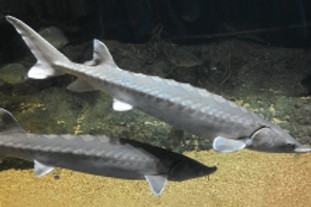Michael Hartnett
Michael Hartnett is the author of six novels, his latest being Blue Gowanus, which I reviewed below. He holds a doctorate in English, is a high school teacher and adjunct professor at Long Island University, and has been a poetry editor. A trenchant critic of social phenomena, he had this sober, and sympathetic, assessment of today’s distracted youth: https://medium.com/@generationdementia/generation-dementia-254b99ca5458
In Blue Gowanus, Michael Hartnett delivers a stellar sequel to the equally powerful The Blue Rat. The two are not labeled as a series, but Gowanus segues smoothly into this second novel that at once mirrors the author’s original, loving embrace of New York City and adds light to its darker side.
That side is represented by Timothy Tolland, a corrupt real estate mogul who erects towering buildings intended as monuments to himself but are cheaply designed eyesores that El Buscador, a popular tour guide, finds repulsive. He makes it his mission to thwart Tolland’s plans, living in the shadows to escape the goons sent by Tolland to discourage or, as a final measure, to silence, him forever. El
Buscador’s vendetta has a personal component, as well: His parents were forced out of a rent-control apartment by Tolland, and had to move to Florida (valued for its warm weather, but not much else).
In The Blue Rat, Tolland breeds the rodents, dyeing them blue, for use in bloody gambling events in which dogs compete to slaughter the most rats in a given time frame. Blue Gowanus features a sturgeon, a long and long-living fish from antiquity. El Buscador’s collaborator in the war against Tolland, The Herald newspaper editor Mavis, reappears in the new novel when she and El Buscador spot a creature swimming in the Gowanus Canal in Brooklyn. She identifies it as a sturgeon, which comes to be known as the Gwaken and creates a stir among the populace.

Atlantic sturgeon
“It’s snout was extended and narrow, and its submarine body glided with the inevitability of inertia,” Hartnett observes. It’s this sort of expository writing, both piquant and eloquent, that burnishes the ingenious story line. Mavis, El Buscador’s love interest, is but one of a coterie of characters well-limned in the earlier work, a rat pack who take increasingly nuanced shape in Blue Gowanus, which is replete with a mix of satirical humor and hard-nosed, realistic dialogue.

Gowanus Canal
“‘Mavis,’ said El Buscador … ‘you run a story on the creature, and every hipster will be down here in Brooklyn feeding it meat pies and hurling axes at it.’ Mavis giggled … ‘You old fool. You think you’re the only one with eyes. You think no one’s going to see this thing. And stop calling it a creature. It’s a big fish.’”
Tolland has a big apartment project planned for the banks of the Gowanus, which would bring respect to the canal that has been a dumping site for industrial pollutants and sewage. What kind of a project will it be? Who are the architects? Should El Buscador champion, or oppose, the development? Will Tolland do him in? And what role does the Gwaken play in the developer’s plans?
Hartnett keeps you guessing, right up to the intriguing conclusion in this literary tour de force.

